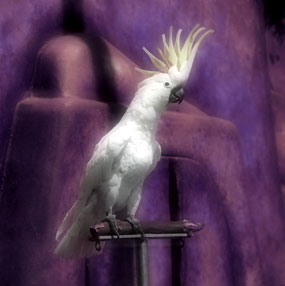
Cockatoos are a little tricky to breed. You can’t just buy a pair and then stick them into nesting boxes. This species seems to have a higher incidence of mate aggression. The male attacks the female, and by the time you realize what’s happening, it’s too late.
Cockatoos Breeding-Choosing healthy birds
You need healthy birds, since parents will inevitably pass on diseases, or produce weak or sickly hatchlings. Bring potential breeders to the veterinarian, who will call for a battery of tests such as gram stains or bacteria cultures. You may be asked to quarantine the bird, especially if you keep several cockatoos in one area.
Cockatoos Breeding-Choosing a compatible pair
The best way to avoid this is to get a compatible pair. They need to be familiar with each other. Give them time to get used to each other, and introduce them long before mating season starts. You can do this by placing them in separated cages which are side by side. Observe them for signs of interest in each other. This includes calling out to each other, or trying to sit next to each other by gravitating to the nearest corners. Only then should you release them from the cage.
Happy pairs will preen each other and click their beaks in a “cockatoo kiss”. However, don’t rush them: observe them as they build their bond, and watch out for signs of irritation.
Also make sure that the pair have the same sexual maturity level. Generally, the best age for breeding is a little over a year old. Remember that good pets don’t necessarily make good breeders, especially if the cockatoos were hand-fed and never exposed to other birds.
Cockatoos Breeding-Building a nesting area
Small cockatoos will need at least 8 foot flights, while the bigger cockatoos will need 12 foot flights. Breeding experts encourage at least 15 foot flights, since this gives the female a chance to run and escape if the male suddenly attacks. As an additional precaution, install two entrances so that they can move about freely, and in case the male does become aggressive, the female can escape.
Some males may hoard the food, so leave two separate food and water dishes at the opposite ends of the cage. You can feed them pellets, seeds, pasta, fruits, vegetables, and plenty of beans and grains. You can also give the females baked egg shells twice a week, to improve calcium intake.